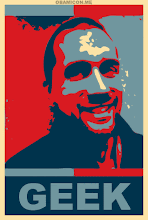50% of the value of training comes in the 'back half'. Good stat - We're training for a positive effect on the organization, not necessarily for the individual themselves. Perhaps we tend to blur the line a bit about the 'why' are we training. It's important to consider the individual, but in the end...it's about the company. What's in it for (company name here)?
What Learners Need
- Acquire knowledge and skills
- Practice using knowledge and skills
- Coaching and feedback
Learning Reinforcement
Acquisition + Application - A good formula, but it's missing a piece...
Acquisition + Reinforcement + Application - The complete formula. Without reinforcement, the learner's motivation starts to wane and, as discussed yesterday, intrinsic motivation is key in adult learning. Moving from Acquisition to Application without Reinforcement is difficult, at best. Without it, you're putting all of the learning task on the learner themselves.
Finish this sentence: All I ever needed to know, I learned in ______________ .
Most people respond with Kindergarten. And what did we use nonstop back then, maybe thereafter for a little bit? Flash Cards.
Why do they work? Mobile, short, simple, inexpensive, customizable, immediate feedback, fun...a lot more. And the fun is optional, for sure. But it must be noted that the proper methodology...the proper knowledge (phonics, math, etc.) needs to be instructed FIRST. The Flash Cards do not work for primary instruction, but certainly do an amazing job of reinforcing existing knowledge sets. Or, if it is a new concept, it must be related to something previously known.
Push vs Pull Methods
Pull method is one where the learner has to go somewhere and find it for themselves. Push is when we, the trainers, push the materials to the trainees. Pull is more common and a lot easier to build, but...what's going to be better for the learner? Push is more controlled, more guided. Both of these methods can be "Just In Time". A mix, in the speaker's opinion (and mine), is the best recipe.
Speaker mentions that on some 90 day follow up calls with clients, it was like they were never there. Scary stuff...fortunately, in my field, the user gets thrown right into usage. But in the cases where usage is sparse/staggered, more push methodology for reinforcement is better than a good idea...it's a great idea.
Measurement
Reaction --> Learning --> Behavior --> Results
Speaker has a product, Cameo, which is a web based tool that delivers scenario-based learning reinforcement via email. Learners receive scenarios via email, learners receive feedback based on their response to the scenario, then Cameo aggregates the data of the learner responses. Kinda like an LMS in that regard...color me interested, though.
Good session on reinforcement and its finer points.
Subscribe to:
Post Comments (Atom)


No comments:
Post a Comment